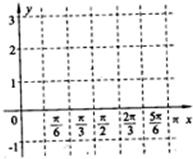题目内容
若函数f(x)=
+?nx在[1,+∞)上为增函数.
(Ⅰ)求正实数a的取值范围.
(Ⅱ)若a=1,求征:
+
+…+
<?nn<n+
+
+
+…+
( n∈N*且n≥2 )
| 1-x |
| ax |
(Ⅰ)求正实数a的取值范围.
(Ⅱ)若a=1,求征:
| 1 |
| 2 |
| 1 |
| 3 |
| 1 |
| n |
| 1 |
| 2 |
| 1 |
| 3 |
| 1 |
| 4 |
| 1 |
| n-1 |
分析:(Ⅰ)先求函数f(x)的导数,因为函数f(x)=
+?nx在[1,+∞)上为增函数,所以在[1,+∞)上导数大于等于0恒成立,就可根据x的范围求出a的范围.
(Ⅱ)因为f(x)=
+?nx在[1,+∞)上为增函数,所以n≥2时:f(
)>f(1),因为f(1)=0,所以,n≥2时:f(
)>0,就可得到
<ln
,进而证明
+
+
+…+
<ln
+ln
+…+ln
=1nn成立,再利用导数判断y=lnx-x在[1,+∞)上为减函数,就可得到n≥2时,ln
<
=1+
(n≥2),
进而证明lnn<n+
+
+…+
.
| 1-x |
| ax |
(Ⅱ)因为f(x)=
| 1-x |
| ax |
| n |
| n-1 |
| n |
| n-1 |
| 1 |
| n |
| n |
| n-1 |
| 1 |
| 2 |
| 1 |
| 3 |
| 1 |
| 4 |
| 1 |
| n |
| 2 |
| 1 |
| 3 |
| 2 |
| n |
| n-1 |
| n |
| n-1 |
| n |
| n-1 |
| n |
| n-1 |
进而证明lnn<n+
| 1 |
| 2 |
| 1 |
| 3 |
| 1 |
| n-1 |
解答:解:(Ⅰ)由已知:f'(x)=
(a>0)
依题意得:
≥0对x∈[1,+∞)恒成立
∴ax-1≥0对x∈[1,+∞)恒成立
∴a-1≥0即:a≥1
(Ⅱ)∵a=1
∴f(x)=
+lnx,
∵f(x)在[1,+∞)上为增函数,
∴n≥2时:f(
)=
+ln
=ln
-
>f(1)=0
即:
<ln
∴
+
+
+…+
<ln
+ln
+…+ln
=lnn
设g(x)=lnx-x x∈[1,+∞),
则g′(x)=
-1≤0对x∈[1,+∞)恒成立,
∴g(x)在[1+∞)为减函数,∵
>1
∴n≥2时:g(
)=ln
-
<g(1)=-1<0
即:ln
<
=1+
(n≥2)
∴lnn=ln
+ln
+ln
+…+ln
<(1+
)+(1+
)+…+(1+
)=n+
+
+…+
综上所证:
+
+…+
<lnn<n+
+
+…+
(n∈N*且≥2)成立.
| ax-1 |
| ax2 |
依题意得:
| ax-1 |
| ax2 |
∴ax-1≥0对x∈[1,+∞)恒成立
∴a-1≥0即:a≥1
(Ⅱ)∵a=1
∴f(x)=
| 1-x |
| x |
∵f(x)在[1,+∞)上为增函数,
∴n≥2时:f(
| n |
| n-1 |
1-
| ||
|
| n |
| n-1 |
| n |
| n-1 |
| 1 |
| n |
即:
| 1 |
| n |
| n |
| n-1 |
∴
| 1 |
| 2 |
| 1 |
| 3 |
| 1 |
| 4 |
| 1 |
| n |
| 2 |
| 1 |
| 3 |
| 2 |
| n |
| n-1 |
设g(x)=lnx-x x∈[1,+∞),
则g′(x)=
| 1 |
| x |
∴g(x)在[1+∞)为减函数,∵
| n |
| n-1 |
∴n≥2时:g(
| n |
| n-1 |
| n |
| n-1 |
| n |
| n-1 |
即:ln
| n |
| n-1 |
| n |
| n-1 |
| 1 |
| n-1 |
∴lnn=ln
| 2 |
| 1 |
| 3 |
| 2 |
| 4 |
| 3 |
| n |
| n-1 |
| 1 |
| n-1 |
| 1 |
| n-2 |
| 1 |
| 1 |
| 1 |
| 2 |
| 1 |
| 3 |
| 1 |
| n-1 |
综上所证:
| 1 |
| 2 |
| 1 |
| 3 |
| 1 |
| n |
| 1 |
| 2 |
| 1 |
| 3 |
| 1 |
| n-1 |
点评:本题主要考查了利用导数判断函数的单调性,以及借助函数的单调性证明不等式成立,属于导数的应用.

练习册系列答案
 名校课堂系列答案
名校课堂系列答案
相关题目
 设函数f(x)=
设函数f(x)=